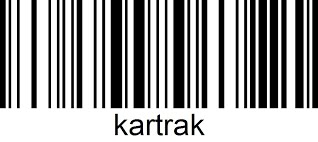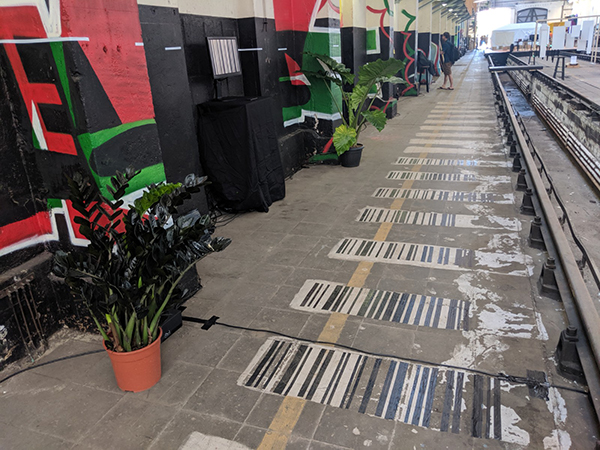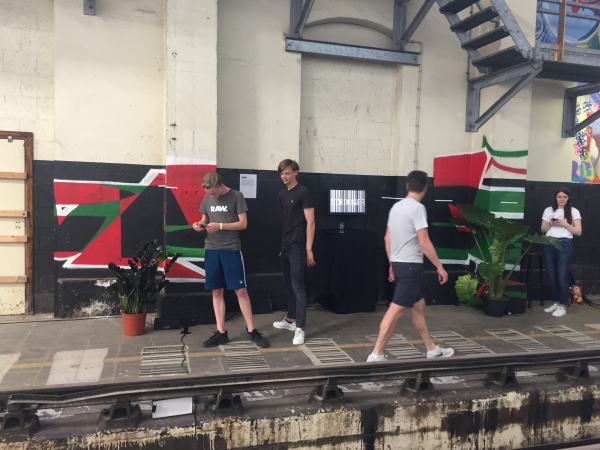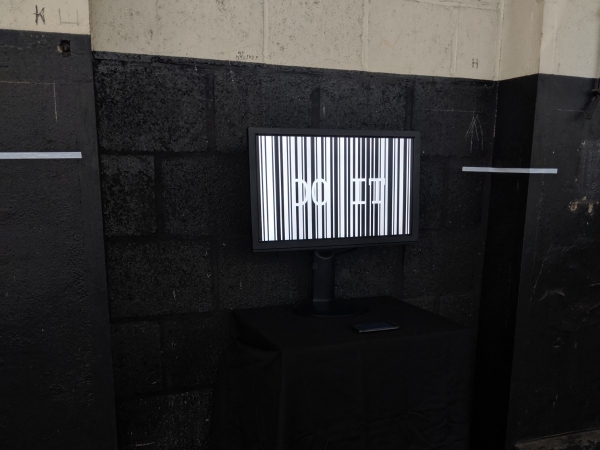kartrak
In collaboration with Andrei Nesterov, Edith Järv
Today, the barcode is the most common way of carrying data and allows us to uniquely identify everything we attach it to. This unique visual language however is not something that we as humans are able to read – we see the stripes and the spaces between them, but it has no meaning to us. Yet, we use it as a universally common language to communicate with computers. Should we however just view the barcode as another machine language or piece of code? Is this a language that we should learn or will we always leave it up to devices to help us with giving it a meaning?
Kartrak was the unsuccessful idea that laid the tracks for a far more successful idea – the barcode. Kartrak was a project that was created 60 years ago by the rail industry to solve a problem that required an automated approach without having access to modern innovation.
With this project we wanted to explore the idea of using this undecipherable visual language and leaving it up to the visitor to decide if they accept that what they see is what they see.

Our project was inspired by the given space. The white stripes on the floor and long passage close to the rails gave us the idea of movement and shape combination. Kartrak is a message. And it will be different if you moving by or stop to explore.
To give the visitors an ability to explore the meaning of barcodes we placed a sentence written in barcode on the ground by marking it up with tape. Visitors could use a phone to scan the codes to uncover the hidden message. As you stepped into the installation you would be symbolically scanned and given a word on the screen. Each word had an accompanied word written in barcode which could also be scanned. Visitors spent time appreciating the bar codes, generating words and exploring their meanings. It was a challenge to get the scan just right!
The installation is autonomous. You could cross the barcode lines ‘being scanned’, hear the beep sound, and move on, or try to decode the message on the floor and on the screen as you enter the space.
Almost every visitor at the expo interacted with our installation in varying degrees. Some of them were very curious and scanned all the barcodes they saw. Others tried to understand the logic of how the barcodes appear on the screen and the meaning of words from Daft Punk song «Harder, Better, Faster, Stronger». Yet others tried to link the meaning of the decoded barcodes on the screen with the message on the floor.
The goal of the interaction was not to decode the message hidden in the barcodes (actually it doesn’t contain any deep meaning, we just encoded the lyrics of the song and gave the reference to formalism art), but to give the visitors idea of parallel between human and machine language. Even though the last one looks simple for us like white and black lines, but it cannot be read with no scanners.
The physical part of the project is the encoded message on the floor. We used Code 128 encoding and online barcode generator to put barcodes with black tape on the white stripes.
The digital part was implemented with Processing and Arduino. Two ultrasonic sensors were used to track the movements of visitors. As sensors trigger the message on the screen was randomly generated (out of given set of messages) and the sound of barcode scanner played. The visual and sound parts were programmed in Processing sketch, which was linked to Arduino environment.
The project files are available on GitHub.




This project was made for the course New Media and New Technologies
Parallels connect matter and myth, metaphor and phenomenon, theory and observation, virtual and reality, the physical and digital, and the present and the future. Parallels are like mirrors giving us a new perspective of our world and a way to extrapolate deep into the future. But just when you thought everything was perfectly aligned, you might be in for a surprise.
In this expo creative researchers from the Leiden University Media Technology MSc program will imagine new realities, blending art, research and technology.
The expo combines works from the first year New Media New Technology course with selected works from the second year project Statement to Experience